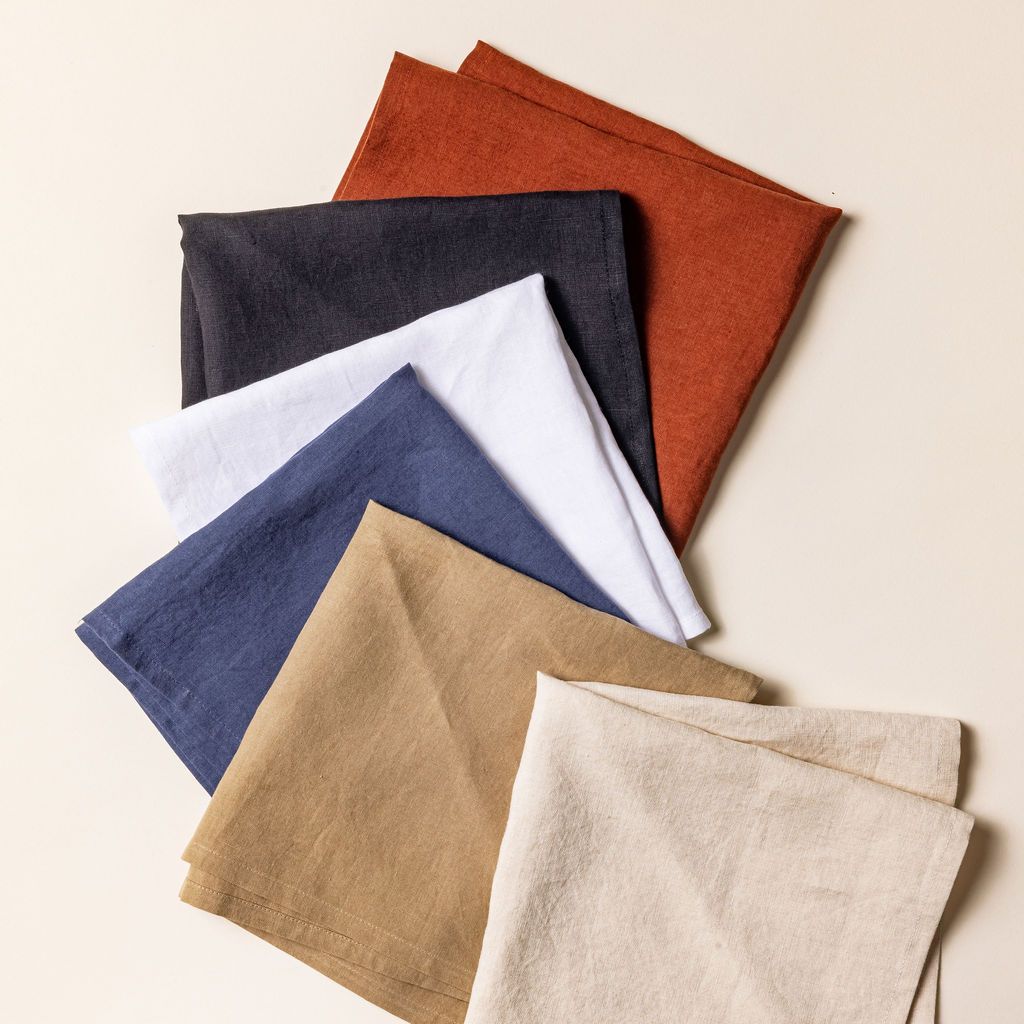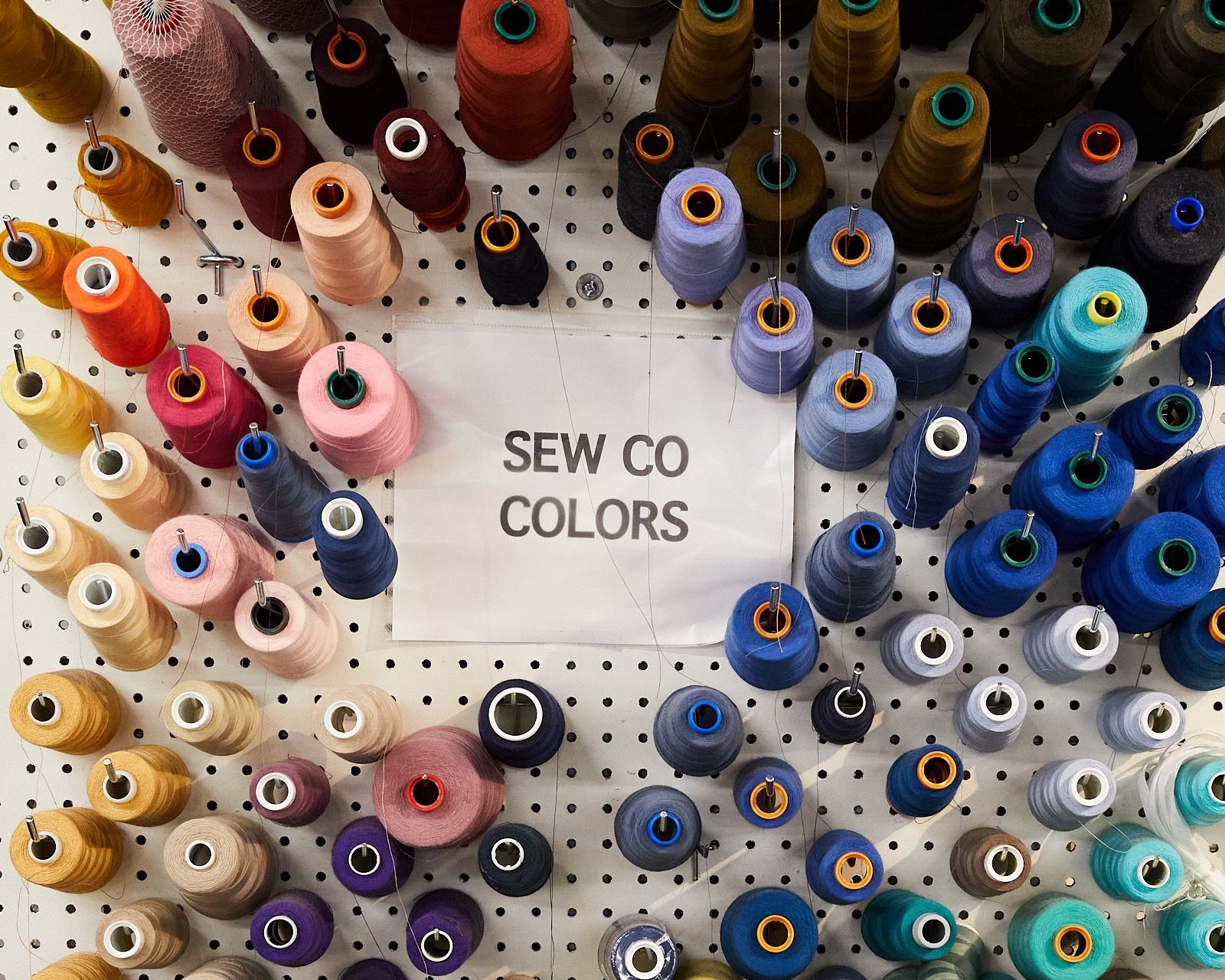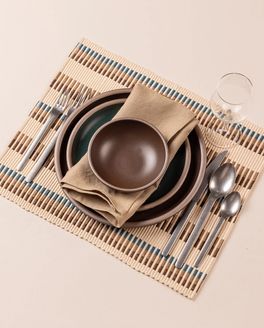
Honoring the Cloth: At the Table with East Fork Linens
Sew Co. is a creative design studio and urban sewing factory based in our hometown of Asheville, North Carolina. We’re big fans, and they’re frequent collaboration partners on our “not-pot” tabletop and kitchen objects.
Sew Co’s Libby O’Bryan was kind enough to sit down with us and share a behind-the-scenes glimpse into the process of creating an exclusive line of linen napkins for us, as well as her tips on how to care for all your kitchen linens.
Jasmin: Tell us about Sew Co. and your unique approach to the creation and design of sewn products.
Libby: We work with values-aligned clients who want to produce high quality products that will last. We work with brands with varied sewn-product types, but we love working with local companies who we also share a community with. Listening to our clients needs and finding a solution to their puzzle is our strength. We love working with clients who care about the quality of their raw materials and the construction details of the products we make for them. We call it “honoring the cloth” because we understand the value of all the raw materials and human labor that has been invested in the materials before they even get to us for cutting and sewing.

Jasmin: We love collaborating with Sew Co. What was the process like creating the East Fork Linen Napkins that pair with our core color glazes?
Libby: East Fork wanted the highest quality, natural-fiber textile and an array of color options that would go hand-in-hand with their material and color palette. The premium Belgian linen vendor we work with was a perfect choice, not only because of their beautiful color card, but the texture and richness of the linen gives a depth and texture that complements the materiality of the East Fork clay and glazes.

Jasmin: Let’s talk more about sourcing linen. Why does Belgian linen stand a cut above other types of linen?
Libby: Usually fibers from a certain area are superior due to the length of time they have been cultivated in that area, and if that region’s environment is most suited for the cultivation of that particular crop. (Remember, textiles come from the earth too!) The western European climate in Belgium is ideal for growing soft, durable flax plants. Linen is great for workhorse items in the kitchen like East Fork’s Linen Napkins because it’s super strong, very absorbent, and dries quickly.

Jasmin: What are your tips for caring for linen tabletop and kitchen items, and does linen get better with age?
Libby: The textile that East Fork selected has already gone through a softening process, so it won’t shrink much, and the durability of the yarns allow it to withstand machine washing.
To clean them, you can spot clean first with a mild soap like Bronners. Then wash with cold water, so that stains don’t set (and, bonus, you save some energy!)
Line drying is always best - nothing, especially plant fibers, really likes a hot dryer - ouch! Your napkins will last much longer if they are not scorched in a hot dyer. Your linen will naturally soften more over time, which keeps us loving it more and more.
Jasmin: Lastly, if you could give linen a “senior superlative,” what would it be?
Libby: “Expected to Age the Most Gracefully” or maybe “Hardest Working”


